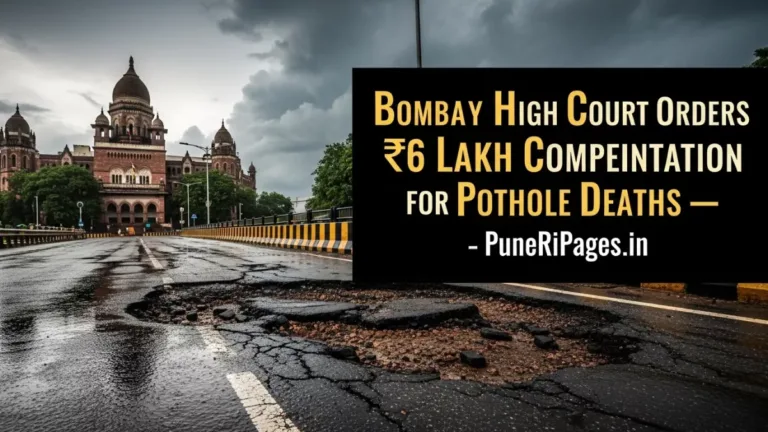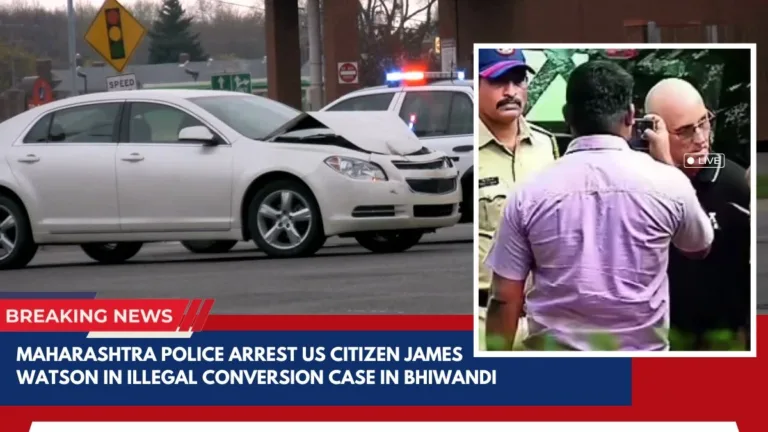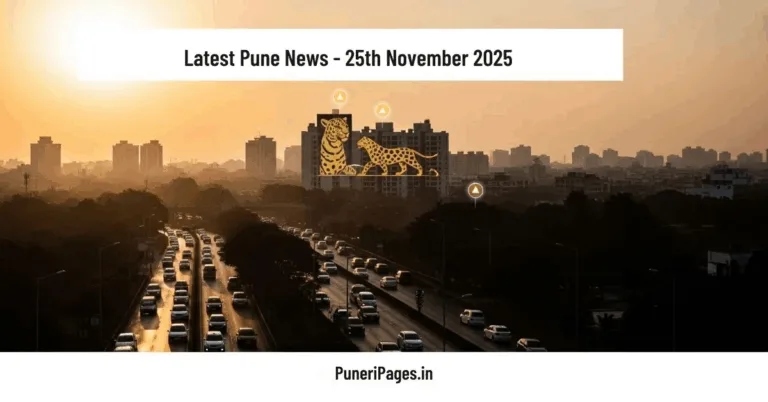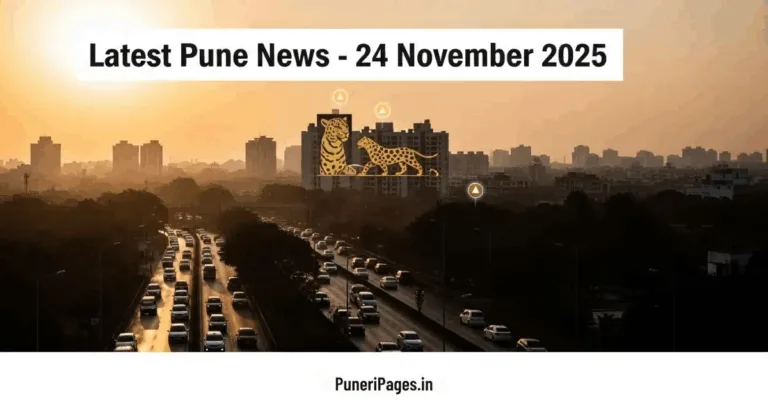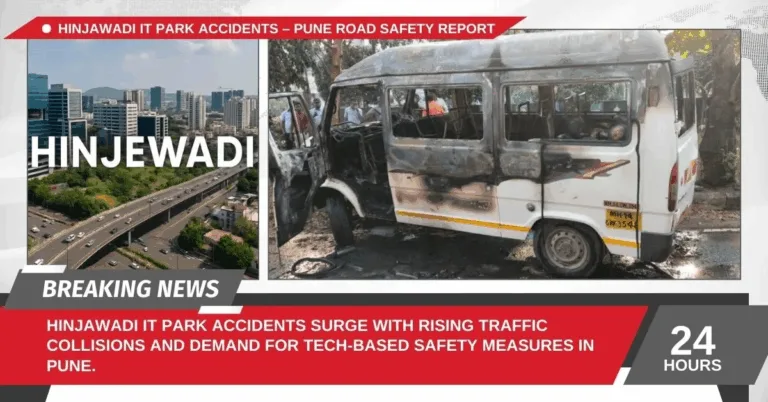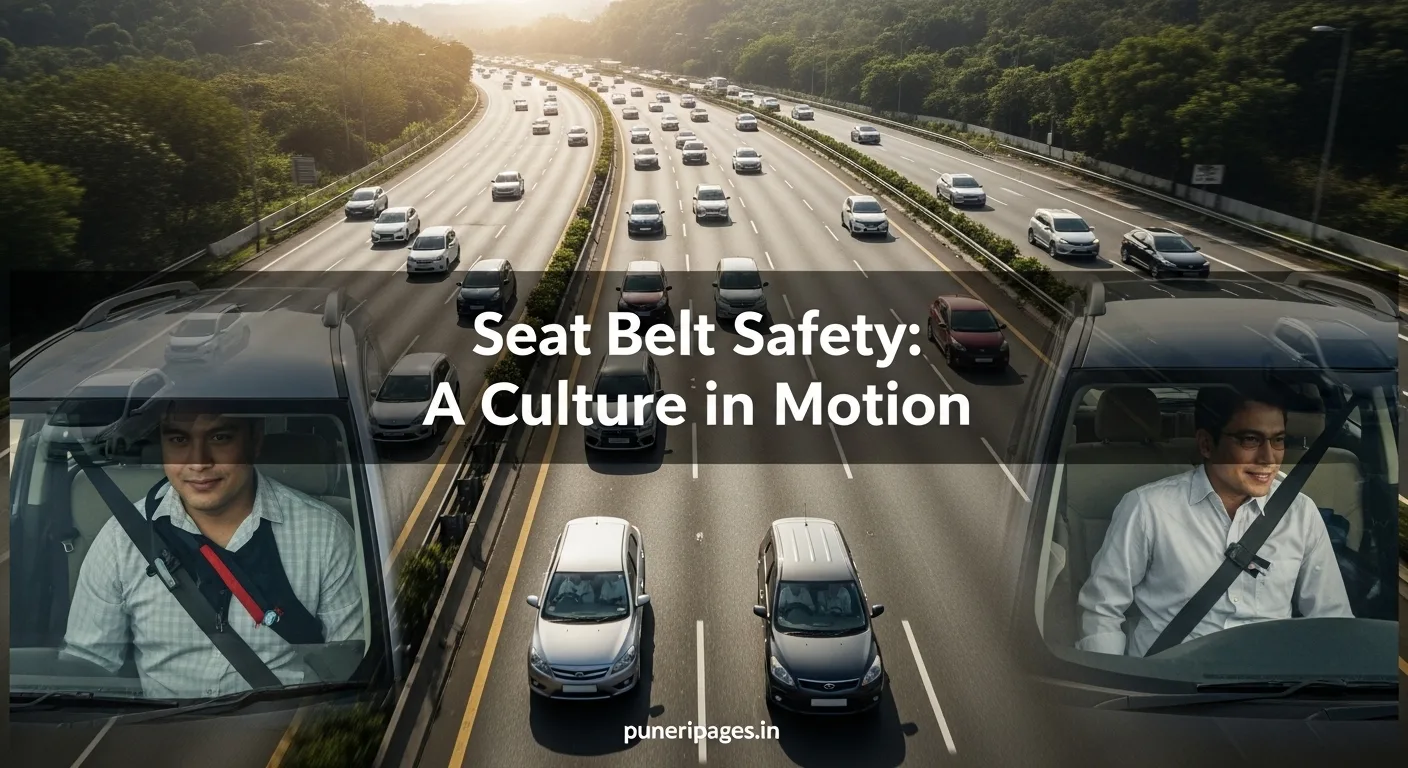
Driving towards a safer future on the Pune-Mumbai Expressway — because every seat, every trip, every time matters. | puneripages.in
By Prashant for PuneriPages.in
The Pune-Mumbai Expressway isn’t just another road. It’s the busy artery that connects two of Maharashtra’s biggest cities, pumping life into commerce, travel, and daily commutes. But it’s also a place where lives are lost far too often. So, when the Highway Safety Patrol (HSP) reported that seat belt violations have dropped to just 900 this year, I felt two things: relief, and curiosity. Is this a real shift in the way we approach road safety, or are the numbers just telling part of the story?
Table of Contents
The Core News
Yes, the data is clear: violations have gone down from thousands in earlier years to 900 this year. That’s not just a dip; that’s a plunge. But before we pop the confetti, let’s ask the important question: why?
Factors Behind the Trend
1. Increased Enforcement
HSP has been more visible than ever. If you’ve driven the Expressway lately, you’ve probably noticed the checks at toll plazas. That constant reminder that “someone’s watching” can make even the most reluctant driver buckle up.
2. The ‘Cyrus Mistry Effect’
The tragic loss of industrialist Cyrus Mistry in 2022 shook the country. For many, it was the first time they heard about the importance of rear-seat belts. It made the risk real—and personal.
3. Technological Intervention
With AI-powered cameras now spotting violations automatically, the old game of “spot the cop, then wear the belt” doesn’t work anymore. If you’re caught, you’re caught.
4. Public Awareness Campaigns
Government ads, newspaper headlines, social media posts—it feels like we’ve been bombarded with the seat belt message. Maybe, just maybe, it’s finally sinking in.
Reading Between the Lines
Violations vs. Compliance
Fewer tickets issued doesn’t automatically mean more people are wearing seat belts. It could also mean enforcement shifted focus or was less frequent.
The Rear Seat Belt Challenge
Front-seat compliance is better, sure. But the back seat? Still a major weak spot.
Is It Permanent?
Behavioral changes can fade. Without consistent enforcement and awareness, old habits will creep back.
Your Life Is Not an Option: The Seat Belt Fact Sheet
- The Law: Every passenger, front and back, must wear a seat belt.
- The Physics: At just 50 km/h, an unbelted passenger can hit the person in front with the force of a small elephant.
- The Cost: A few hundred rupees in fines vs. a life saved? No contest.
The Official Word
HSP credits the drop to a mix of tech-driven enforcement and awareness campaigns. But they’re honest about the fact that rear-seat compliance is still a battle.
Conclusion
This drop in violations is worth celebrating—it means we’re moving in the right direction. But the real win will come when buckling up is automatic, no matter where you’re sitting or how short the trip. Until then, keep that belt on. Always.

